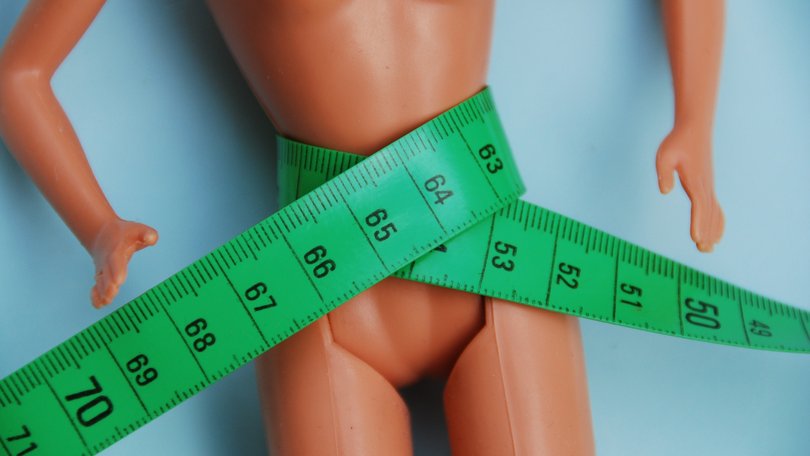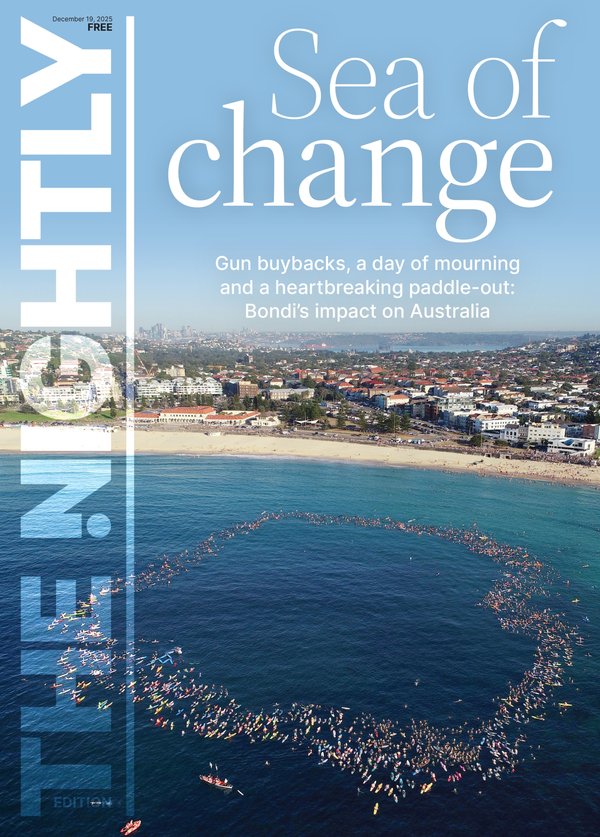THE NEW YORK TIMES: Doctors divided over safety of rib removal surgery to achieve ‘Barbie waist’

Remember when someone lashed her waist with laces and boning until it was so tiny you could wrap your hands around it? Of course, you remember, given that it was all of a few months ago.
Not that we actually wrapped our personal arms around that particular waist, but Jeff Bezos did. There was also a time when a woman squished into a piece of vintage gossamer silk sprinkled with sequins.
That was all the way back in 2022, when Kim Kardashian strained the seams of Marilyn Monroe’s “Happy Birthday, Mr. President” dress.
Sign up to The Nightly's newsletters.
Get the first look at the digital newspaper, curated daily stories and breaking headlines delivered to your inbox.
By continuing you agree to our Terms and Privacy Policy.The tiny, tortured waist has returned as a bodily preoccupation, ready to eclipse voluminous breasts and buttocks as areas of obsession, manipulation, distortion and angst.
While some women are Scarlett O’Hara-ing themselves into gowns fitted with bespoke corsetry, plastic surgeons are working on more permanent methods to create the wasp waist, the ant waist, or what the leading surgeon in this emerging subspecialty calls the “Barbie waist.”
The new approach to the waist originated in Russia in 2017, when a doctor decided to explore an alternative to rib removal, which was the way some surgeons — though not many — had whittled the waist in the past.
The procedure is exactly what it sounds like: an operation in which the surgeon completely or partly extracts the 11th and 12th “floating” ribs.
It’s an operation that carries “considerable risks” and “significant detrimental effect on lung and respiratory functions,” wrote Dr. Alfredo E. Hoyos and his colleagues in “Waistline Aesthetic Slimming by Puncture and Parallel Approach for Rib Remodeling Procedures,” a medical paper.
Dr. Kazbek Kudzaev, the innovator from Vladikavkaz, Russia, is even harsher in his assessment of rib removal, calling it “mutilating surgery.”
In an interview with a translator over WhatsApp, he said: “Rib removal surgery contradicts the main principle of medicine, ‘primum non nocere,’” first, do no harm. “It is a harmful and dangerous technique.”
That’s what propelled him to find an alternative. His early efforts in 2017 involved incisions near the bottom ribs on the right and left sides of the body. He maneuvered each rib with a drill, bending it until one side snapped in what’s called a greenstick fracture.
From there, he instructed the patient to strap into a corset for two months, until the ribs fused together in a new position. The result was a waistline reduction of 9 centimetres, or 3 1/2 inches.
If it sounds like a David Cronenberg film, absolutely. And yet the doctors who perform this procedure believe it’s a tidy and sophisticated solution to a recalcitrant territory.
Others, including Dr. Robert Singer, a board-certified plastic surgeon in La Jolla, California, and the past president of the Aesthetics Society warn its potential problems are greater than in other surgeries.
“Let’s put it this way,” Singer said, “If my daughter or wife wanted to get this procedure — not that I have any influence over them — I’d tell them not to.”
The waist resists most efforts at reduction, maintaining its proportion to the hips despite exercise, diet and liposuction. Hoyos often applies his expertise in high-definition liposuction to manipulate the waist-to-hip ratio — a technique he created in Bogotá, Colombia, that combines fat removal and fat grafting within the muscle to sculpt it.
That creates an athletic physique and sometimes even six-pack abs, but it does not affect the waist-to-hip ratio. “Always the limitation was the bony structure,” he said.
Hoyos discovered the Russian technique through a colleague and recalled watching a video of a doctor performing it on a woman who was lying in bed, chatting on the phone.
“Yes, it’s true,” said Kudzaev. “The patient didn’t feel any pain and was able to use her phone during the surgery.
She was under local anaesthesia, and I usually perform these surgeries under local anaesthesia, but if the patient requests it, it can be done under general anaesthesia.”
Hoyos had his doubts: “Everybody said, including me, that this looks like a circus attraction. I was reluctant at the beginning.
We needed to make it safer and more reproducible so you can teach it to other doctors. But now I think it will change the way we think about body contouring.”
Since then, doctors around the world have modified the technique, making it safer, faster, less painful and more consistent.
Today, according to Hoyos, the average rib remodelling procedure costs $8,000, takes about 10 minutes and requires eight to 12 weeks of recovery in a corset. The average waist reduction is 8 to 12 centimetres.
The latest modification replaces the incision with a needle puncture and employs an ultrasonic tip that cuts the key ribs with vibrations.
That’s the WASP technique, which stands for waist aesthetic slimming by puncture. Various surgeons have come up with their own acronyms and monikers. Hoyos is partial to “Barbie waist” because “it’s a more friendly name for the public.”
But Barbie herself, at the fine age of 66, would not be a candidate — not that she needs it. The procedure works best on women in their 30s and 40s, because older ribs do not heal as effectively.
Athletes and people with strong abdominal muscles — including men — do not fare well either because their muscles often pull the ribs back to their original shape. For them, there’s Riboss rib remodelling by osteosynthesis, which requires plates and screws to hold the ribs in their new configuration.
Not every expert is popping bottles over these developments. Dr. Steven Teitelbaum, a plastic surgeon in Santa Monica, California, who specialises in breasts and body contouring does not do rib remodelling. “I think the results look cartoonish and ridiculous,” he said.
“But that’s my taste. Plastic surgery is criticised for creating an artificial standard of beauty,” but he prefers the word “ideal,” meaning trying to create in a patient what nature creates in other people.
Hoyos is stalwart. He believes rib remodelling “will change the way we think about body contouring.” “There are surgeons who will say, ‘This is dangerous, it will be difficult to get good results,’” Hoyos said, “but we’re slowly proving otherwise.” Like it or not, it may even be a breakthrough. “A paradigm shift.”
This article originally appeared in The New York Times.
© 2025 The New York Times Company
Originally published on The New York Times
